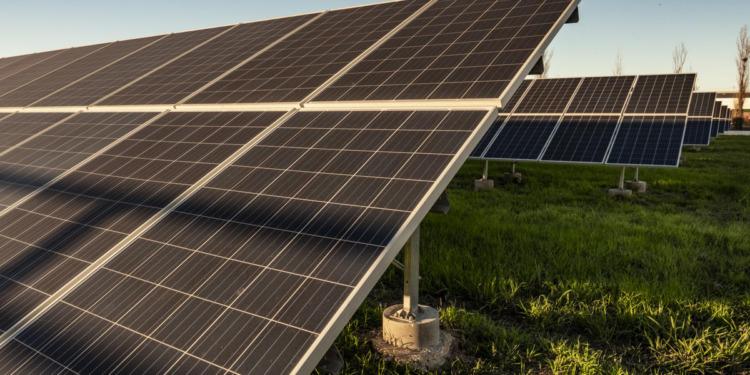The rapid transition to renewable energy offers opportunities to reset the broken relationship between energy production and nature, according to a new report by the Coalition Linking Energy And Nature for action (CLEANaction).
CLEANaction is a coalition of NGOs, leading businesses, government bodies and financial institutions established in recognition of the urgent need for a global and just transition to a low-impact and nature-sensitive renewable energy system. The founding members are WWF, IRENA, ICLEI, The Nature Conservancy, Birdlife International and the Alliance for Rural Electrification (full list of members can be found here).
In its first major report, CLEANaction confirms that even when the full range of environmental impacts — from sourcing raw materials to final operation — is considered, generating and storing energy from renewables is far less environmentally damaging than using fossil fuels.
The report argues that a transition focused on wind and solar can result in significantly reduced environmental impacts compared to other renewable energy types, although other renewables can be the most appropriate solution depending upon the local circumstances.
To limit global warming to 1.5ºC above pre-industrial levels and avoid the worst risks of climate change, renewable energy will need to account for more than 90% of electricity generation by 2050 according to International Energy Agency projections. The report explains how, in a vital decade for action, the potential for negative impacts from the energy transition can be carefully managed to ensure that renewable energy technologies causing the least damage to nature are prioritized.
“Climate change is causing havoc across the globe and, together with habitat loss and overexploitation, is a leading cause of reduced biodiversity worldwide. This loss of biodiversity, and of the natural carbon uptake and storage enabled by healthy ecosystems, exacerbates the climate crisis and threatens the health and wellbeing of humankind around the world,” said Dean Cooper, WWF global energy lead. “We all must urgently shift to 100% renewable energy, but we must take care to protect and enhance nature at the same time.”
Related Articles: Why UN Climate Science Must Keep Shaping Global Climate Policy | Landmark High Seas Treaty Agreed, Ushering in New Rules for Two-Thirds of the Ocean
Existing global-scale mapping of sites for wind and solar indicate there is enough energy available in areas which have low conflict with biodiversity to achieve projections from the International Energy Agency for a power system consistent with holding global temperature rise to below 1.5ºC. This Paris Agreement goal is a crucial threshold to avoid the most catastrophic impacts of climate change on people and nature.
Significant changes are also needed in how we source and trace materials, such as rare earth elements, for developing our energy infrastructure. A new, circular economic model is essential to reduce environmental impacts, according to the report.
A circular economic and energy-efficient model should prioritize the reduction of primary materials, as well as reuse and recycle to minimize further extraction and impacts related to the disposal of end-of-life equipment. When mining occurs, rigorous environmental and social safeguards must be in place to avoid the degradation of natural habitat and other harms, according to the report.
To achieve a clean energy future that takes full account of the impact on nature, CLEANaction is urging governments to:
-
Undertake strategic-level energy planning at national or regional scales to identify potential energy savings, suitable renewable energy sources, and sites for energy expansion in areas of low biodiversity sensitivity.
-
Consider the impact on nature at the earliest stage of integrated clean energy planning, taking account of the full value chain (from sourcing material to disposal).
-
Develop national regulatory schemes that require energy developers to contribute to national conservation targets.
-
Invest in timely nature-sensitivity mapping to help direct technology siting through proper data, and require industry to avoid protected areas, Key Biodiversity Areas, and other areas of particular sensitivity and value.
-
Apply stringent environmental impact assessment processes and required standards to all new developments according to best practice.
-
Adopt a circular economy approach with optimised energy efficiency, to maximise reuse of energy materials, and minimise demand for natural resources.
CLEANaction is calling on renewable energy investors and developers to:
-
Integrate biodiversity, social and environmental risks early into renewable energy planning and investment decisions.
-
Apply effective biodiversity safeguards and environmental impact assessment procedures to avoid and minimise impacts, and offset any residual impacts to achieve net-positive outcomes.
-
Ensure there is traceability of raw materials and account for supply chain impacts within corporate commitments to nature.
-
Apply a circular approach to minimise the use of primary materials and maximise the reuse and recycling of materials.
-
Strengthen corporate disclosure and reporting on biodiversity, environmental and social impacts.
— —
This article was originally published by WWF and is republished here as part of an editorial collaboration with WWF.
Editor’s Note: The opinions expressed here by the authors are their own, not those of Impakter.com — In the Featured Photo: The Armstrong Cooperative (Cooperativa de Provisión de Obras y Servicios Públicos Limitada de Armstrong) solar plant. The cooperative was the first initiative in Santa Fe province to go to distributed renewable energy generation. This solar plant (0,2 MW) built (and now managed) by the cooperative in partnership with the National Technical University (UTN) allows the cooperative to provide electricity to the grid and, given its role as a distributor of electricity to its members, to buy less electricity generated with fossil fuels. Armstrong, Santa Fe, Argentina. Featured Photo Credit: WWF.









